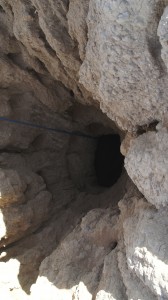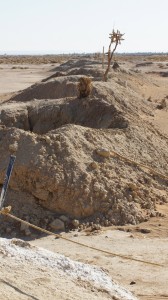The sheer labor required to maintain an oasis might be part of the answer to the slavery question–the puzzle of Sijilmassa’s path from radical equality (the Kharijites) to promoter of the salt/gold/slave trade.
And some of the most invisible labor of the oasis is hidden underground.
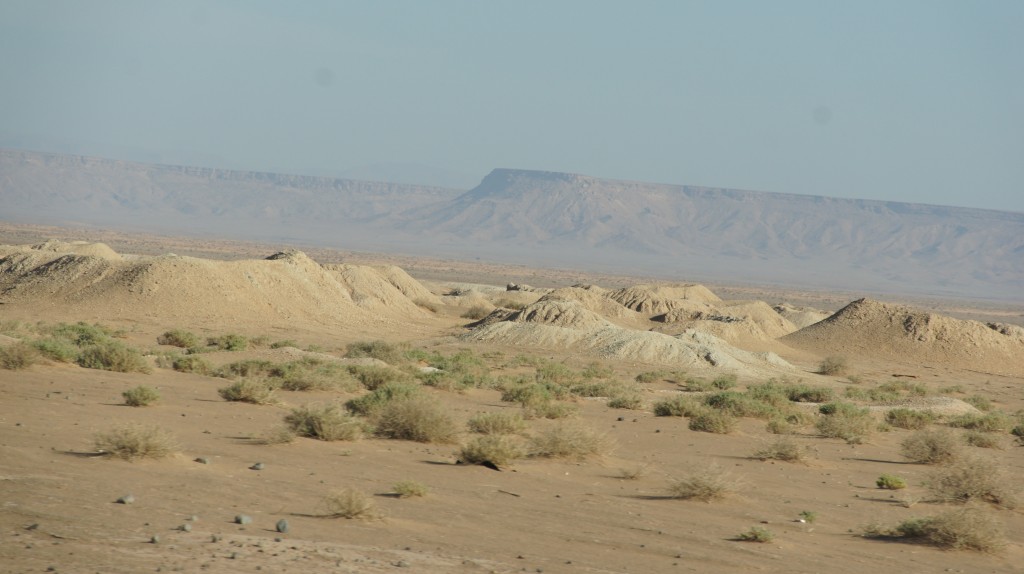 There you are, driving through the desert, and you see a bunch of enormous anthills. Really? Ant-hills? Maybe mole hills? How big are those moles? The size of camels?
There you are, driving through the desert, and you see a bunch of enormous anthills. Really? Ant-hills? Maybe mole hills? How big are those moles? The size of camels?
What are those things?
Those are khettara, “an ingenius technology to harvest hidden groundwater and deliver it to the surface by means of gravity alone.”* Who knew?
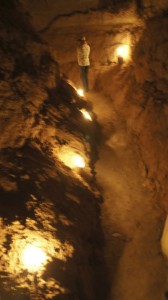
The khettara is essentially a tunnel or gallery, large enough to walk in (though perhaps only in a bent over or crouching position), and often several kilometres long. Khettaras (called qanat in Iran and other countries) serve to move water from a higher place to a lower place–in this particular case, the khettaras are moving water from the piedmont (the foothills) of the High Atlas to the extended oasis of the Tafilalt: a total of 48 kilometers. Mind-boggling!
 What’s visible on the surface are merely the waste piles: the heaps of sand and scree dug out of the water channel and removed to the surface of the earth.
What’s visible on the surface are merely the waste piles: the heaps of sand and scree dug out of the water channel and removed to the surface of the earth.
The brilliance of this irrigation system is hard to overstate: these khettaras can move water up to 48 kilometers while keeping it underground, minimizing evaporation and maximizing irrigation potential.
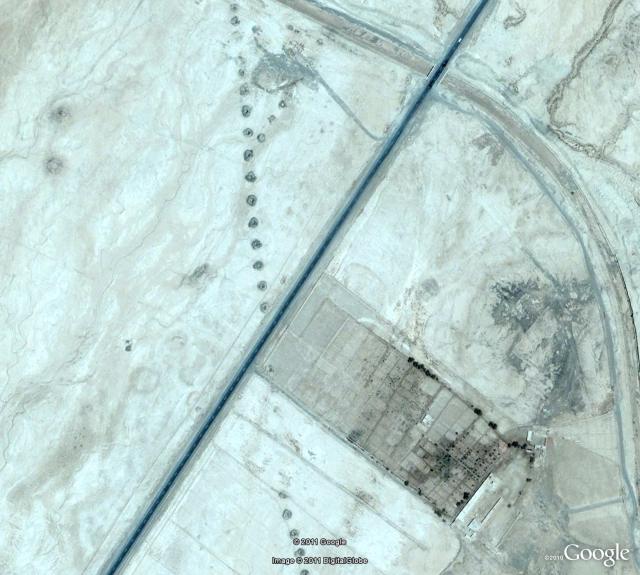
Satellite image of a single khettara (made visible through the line of access shafts) crossing under the national road–taken from Eric Ross’s blog: http://ericrossacademic.wordpress.com.
Without the khettara, Fitzwilliam-Hall suggests, the date palm oases of southern and central Morocco might never have existed. (Lightfoot and Miller suggest, conversely, that khettara only came into use in the Tafilalt region after the fall of Sijilmassa: the city’s central government could maintain the network of canals watering the city, but khettara were more suited to the dispersed, decentralized labor available to the individual qsar. In this case, the role of the Haratine in Sijilmassa must have been more related to field work than to khettara irrigation.)
There’s a rest stop along the road between Erfoud and Tinerhir where you can see a model of how the khettara might have worked: under the ground, a man would be filling up buckets or baskets with sand and sludge; above ground, another man would lie on his back and use his feet to turn a kind of wooden pulley to raise the baskets of sand up to where they could be emptied.
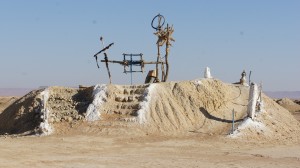
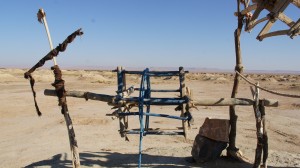
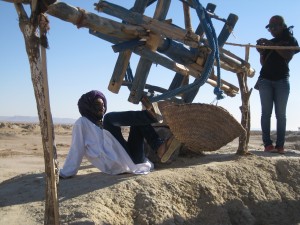
Multiply this labor by a factor of thousands. Remember that each khettara includes many many access shafts (hassi in Arabic; tasfalt in Tashelhit). Simon Fitzwilliam-Hall inventoried 1600 khettaras in Morocco in 2009, though he counted only 350 still functioning. Let’s randomly imagine an average of 30 hassi per khettara for a total of 48,000 hassi.
So who did all that work? Some scholars estimate that creating the Almoravid-era khettaras near Marrakesh would have required 12 specialists and 200-300 laborers working for 30 years; 20,000 Christian prisoners-of-war were allegedly sent from Moorish Spain to Marrakesh to provide unpaid labor. More commonly, the Haratine (see earlier post) are on record as khettara diggers.
This roadside rest stop is historical tourism: a delightfully dry tunnel, hollowed out deeply enough that it’s easy to walk in; atmospheric darkness, punctuated by the light of the access shafts.
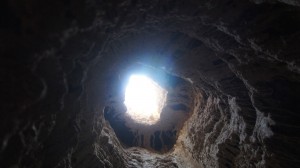

But imagine this instead: slogging barefoot through a stream of water, crab-hopping Golum-like down the channel but still scraping your back or your head on the roof of the tunnel; struggling to shovel sludge into a woven basket that is undoubtedly broken and leaky; dragging that broken and breaking basket to your next access shaft. Imagine having no choice about this labor, no ownership in the products that depend upon the irrigation you so laboriously provide.
Both survival and the means of production seem complicated here.
*Simon Fitzwilliam-Hall, “The Living Khettaras of Southern Morocco: A Traditional Water Harvesting Technology on the Brink”
Dale Lightfoot and James Miller, “Sijilmassa: The Rise and Fall of a Walled Oasis in Southern Morocco”
